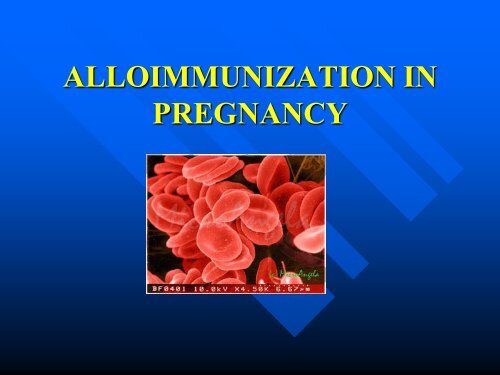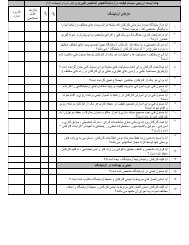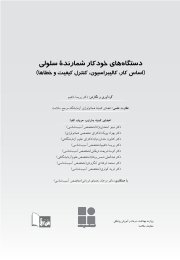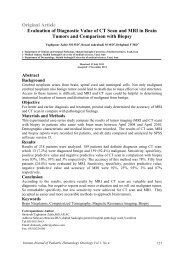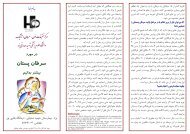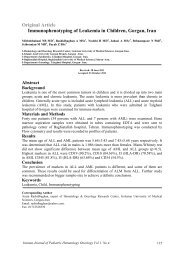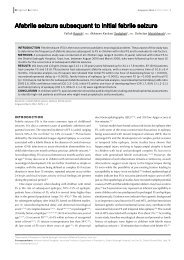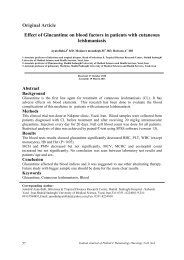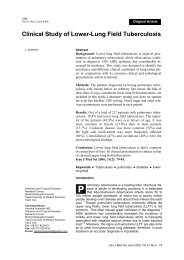ALLOIMMUNIZATION IN PREGNANCY
ALLOIMMUNIZATION IN PREGNANCY
ALLOIMMUNIZATION IN PREGNANCY
- No tags were found...
You also want an ePaper? Increase the reach of your titles
YUMPU automatically turns print PDFs into web optimized ePapers that Google loves.
<strong>ALLOIMMUNIZATION</strong> <strong>IN</strong><strong>PREGNANCY</strong>
Erythroblastosis Fetalis(Red Cell Alloimmunization)• the first description of erythroblastosisfetalis (hemolytic disease of the newborn)dates back to 1609• until the early 1900s that the role ofalloimmunization in the pathogenesis oferythroblastosis was established• In the past, Rh alloimmunization also hasbeen referred to as Rh sensitization or Rhisoimmunization.
ERYTHROBLASTOSIS FETALIS3
Genetics of the Rh Antigen• three genetic loci, each with two major alleles,lettered C, c, D, E, and e.• The Rh gene complex is described by the threeappropriate letters with eight possiblecombinations (listed in decreasing order offrequency among whites): CDe, cde, cDE, cDe,Cde, cdE, CDE, and CdE.• Rh positive indicates the presence of the D antigen• Rh negative indicates the absence of D antigen onerythrocytes.
Pathophysiology of Rh AlloimmunizationRh D alloimmunization can occur only in thepresence of three conditions:(a)(b)(c)the fetus must have Rh-positive erythrocytes,and the mother must have Rh-negativeerythrocytes;the mother must have the immunogeniccapacity to produce antibody directed againstthe D antigen;a sufficient number of fetal erythrocytes mustgain access to the maternal circulation.
Incidence of Rh D Incompatibility andSubsequent Alloimmunization• About 10% of pregnancies are Rh incompatible– fewer than 20% of Rh-incompatible pregnancies result inalloimmunization• About 16% of untreated Rh-negative women becomealloimmunized in their first Rh-incompatible (ABOcompatible)pregnancy– Half produce detectable anti-D antibody within 6 months ofdelivery,– rest have undetectable amounts until early in the next incompatiblepregnancy• before the introduction of Rh immune globulinprophylaxis, only about 1% of pregnant women had anti-Dantibody
Maternal Immunologic Response:• 30% of Rh-negative individuals appear tobe immunologic “nonresponders”who willnot become sensitized• ABO incompatibility diminishes the risk ofalloimmunization to about 1.5% to 2.0%after the delivery of an Rh-positive fetus– The effect is most pronounced if the mother istype O and the father is type A, B, or AB.
Fetomaternal Hemorrhage• Fetal red cells may gain access to thematernal circulation :– during pregnancy,– During delivery:– the immediate postpartum period
Fetomaternal Hemorrhage• During delivery :– 15-50% of births– The amount of fetal blood entering the maternalcirculation is usually less than 0.1 mL but maybe greater than 30 mL in 0.2% to 1.0% of cases.
Fetomaternal Hemorrhage• immediate postpartum period :– Risk factors :» cesarean delivery» multiple gestations,» bleeding placenta previa or abruption,» manual removal of the placenta,» intrauterine manipulation.• However, the majority of cases of excessivefetomaternal hemorrhage occur afteruncomplicated vaginal delivery.
Rh D Immune Globulin and thePrevention of Rh D Alloimmunization• antibody-mediated immune suppression• the amount of Rh D immune globulin necessary toprevent alloimmunization varies according to thesize of fetomaternal hemorrhage:– 300 µg of Rh D immune globulin for exposure to 10mL of fetal blood– 20 µg of Rh D immune globulin for exposure to 1 mLof fetal erythrocytes– 10 µg of Rh D immune globulin for 1 mL of wholefetal blood
Postpartum Alloimmunization Prophylaxis• administration of Rh D immune globulin– a dose of 100 µg to 150 µg– within 72 hours of delivery
Postpartum Alloimmunization Prophylaxis• Rh D immune globulin should be given as soon as possibleafter exposure to Rh D-positive blood (delivery or otherevent associated with fetomaternal hemorrhage) and beforethe primary immune response is established• if for some reason Rh D immune globulin prophylaxisdoes not occur within 72 hours after exposure, susceptibleRh D-negative women should be treated up to 14 to 28days.• if the neonatal Rh status is unknown 3 days after delivery,Rh D immune globulin should be given rather than waitingfor the neonatal results.
Antepartum AlloimmunizationProphylaxis• Prophylactic administration of Rh Dimmune globulin at 28 weeks gestationreduces the incidence of alloimmunizationfrom 1.8% to 0.1%
Management of the Unsensitized Rh-Negative Pregnant Woman• Every woman should have her ABO bloodgroup, Rh type, and antibody screenchecked at the first prenatal visit of allpregnancies• If she is Rh-negative or weak D-negativeand has no demonstrable antibody,– she is a candidate for 300 µg Rh D immuneglobulin prophylaxis at around 28 weeksgestation and again immediately postpartum
Management of the Unsensitized Rh-Negative Pregnant Woman• obtaining another antibody screen beforeadministration of Rh D immune globulin, in• After delivery, another antibody screen isroutinely performed. If negative and thenewborn is Rh D positive or weak Dpositive, women should be given 300 µgof Rh D immune globulincludingantepartum prophylaxis
Management of the UnsensitizedRh-Negative Pregnant Woman• because a small number of deliveries (0.1%to 1.0%) result in a fetomaternalhemorrhage greater than 30 mL :– a screen for “excessive” fetomaternalhemorrhage should be performed routinely» use the erythrocyte rosette test• If positive :the volume of fetal red cells in the maternalcirculation can be calculated by using the Kleihauer-Betketest ,if >30 ml :– an additional 10 µg of Rh D immune globulinshould be administered for each additional milliliterof fetal blood.
Management of the Unsensitized Rh-Negative Pregnant Woman
Management of the UnsensitizedRh-Negative Pregnant Woman• A weak D-“positive mother who delivers anRh-positive infant is not at significant riskof Rh alloimmunization• Occasionally, a woman previously typed asRh negative is unexpectedly found to beweak D positive during pregnancy or afterdelivery– if fetomaternal hemorrhage is found :» the mother should be treated with Rh D immuneglobulin.
Management of the UnsensitizedRh-Negative Pregnant Woman• First-trimester complications result infetomaternal hemorrhage sufficient toalloimmunization :– spontaneous miscarriage,– elective abortion– ectopic abortion• women with threatened first-trimestermiscarriage– only occasionally is associated withalloimmunization
Management of the UnsensitizedRh-Negative Pregnant Woman• patient who has antepartum bleeding orsuffers an unexplained second- or thirdtrimesterfetal death:– should receive Rh D immune globulinprophylaxis– be evaluated for the possibility of massivefetomaternal hemorrhage.
Management of the UnsensitizedRh-Negative Pregnant Woman• Several procedures also may result infetomaternal hemorrhage sufficient to causealloimmunization :– chorionic villus sampling (CVS)– amniocentesis– external cephalic version.
Management of the UnsensitizedRh-Negative Pregnant Woman• For first-trimester pregnancy complicationsand procedures :– 50 µg of Rh D immune globulin is protective.– Beyond 12 weeks, a full 300-µg dose isindicated, even in the absence of detectablehemorrhage.– In second & third trimester: an assessment ofthe volume of fetal whole blood should beperformed, and the appropriate amount of Rh Dimmune globulin should be given
Management of the UnsensitizedRh-Negative Pregnant Woman• Failure to administer Rh D immuneglobulin when indicated may due to:– Failure to type the patient's blood at the firstprenatal visit or to order Rh D immune globulinwhen indicated– Error in transmitting the proper blood type tothe mother's chart and to the physician
Management of the UnsensitizedRh-Negative Pregnant Woman– ...– Error in typing the mother, father, or baby'sblood– Failure to administer Rh D immune globulinwhen ordered– Unrecognized fetomaternal hemorrhage duringpregnancy– Inadequate Rh D immune globulin for thevolume of fetomaternal hemorrhage– Patient refusal
Management of the Rh D-Alloimmunized Pregnancy• mildly affected fetuses:– can be allowed to remain in utero until theyhave achieved pulmonary maturation• moderately to severely affected fetuses:– may need intrauterine treatment (transfusion)and very likely will require delivery prior topulmonary maturation.


